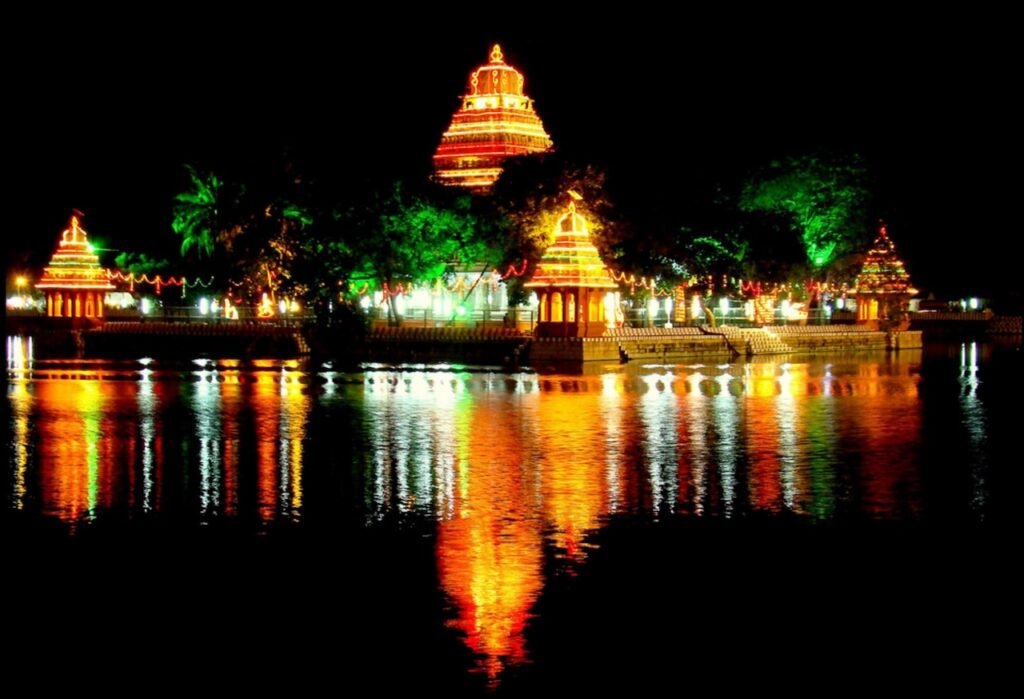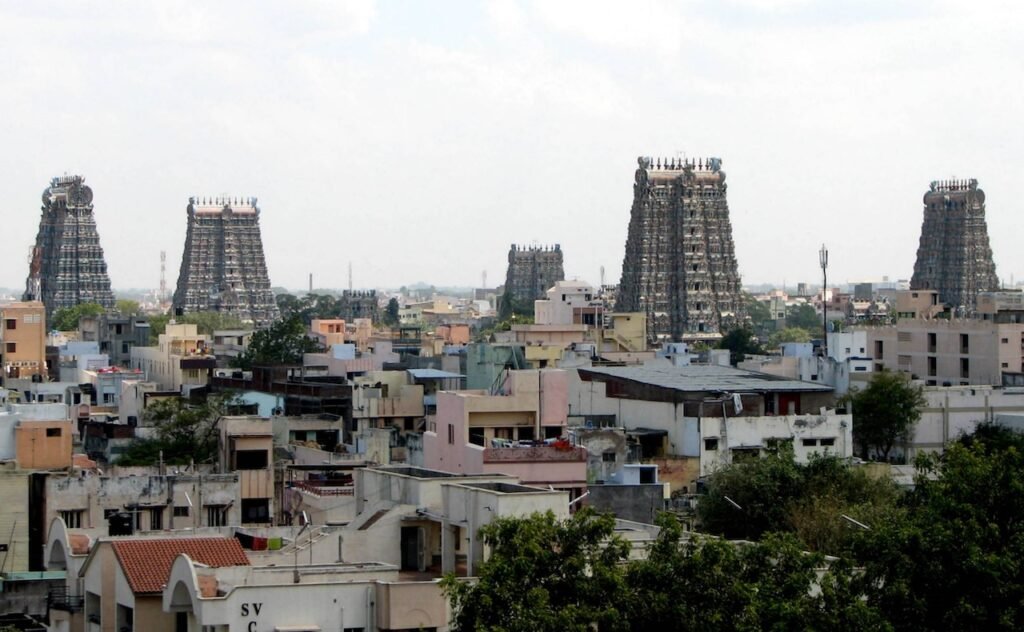Madurai, often called the “Athens of the East,” is an ancient city located in Tamil Nadu, India, renowned for its rich history, thriving culture, and architectural wonders. This article delves into Madurai’s multifaceted essence, its origins, traditions, tourist highlights, routes, economic profile, and unique societal aura, while answering some of the most frequently asked questions about the city.
Introduction to Madurai
Madurai is situated on the banks of the Vaigai River, radiating the heritage of over two millennia. It is the administrative headquarters of Madurai district and is famous as a sacred Hindu pilgrimage site, especially due to the world-famous Meenakshi Amman Temple. The city’s layout resembles a lotus, which has earned it the nickname “The Lotus City”.
History of Madurai
Madurai’s documented history spans over 2,500 years, making it one of India’s oldest continually inhabited cities. Archaeological findings connect its early urban existence to around the 3rd century BCE. Sangam literature and classical Tamil poetry refer to Madurai as the seat of the Pandya dynasty.
Over centuries, Madurai changed hands several times. After the mighty Pandya dynasty, it fell to the Kalabhra rulers, then the Cholas, followed by a resurgence of the Pandyas. The Delhi Sultanate seized Madurai briefly before the Vijayanagara Empire, and then the Nayaks took control. British colonial rule began in the early 19th century and shaped Madurai’s infrastructure and polity. Each ruler left imprints that shaped Madurai’s art, architecture, and sociology.
Geography and Location
Madurai is located in southern Tamil Nadu, India, on the fertile banks of the Vaigai River. It lies at approximately 9.9252° N latitude and 78.1198° E longitude. The city stretches over 147.99 sq km, with a population density of nearly 7,000 people per square kilometre, making it a vibrant urban centre.
Culture and Traditions
Madurai’s culture pulses with tradition, faith, and art. The people of Madurai primarily follow Hinduism, but the city is also home to Jains, Muslims, and Christians, exemplifying unity in diversity. Tamil, spoken in its purest form, is the dominant language here.
Madurai is renowned for its festivities such as the Chithirai Festival (celebrating the divine wedding of Goddess Meenakshi and Lord Sundareswarar), the Theppam (Float Festival), and Avanimoolam, attracting pilgrims and tourists alike. The city also cherishes unique attire; women often wear sarees or half-saris, while men may wear traditional dhotis.
Music and dance are woven into the everyday life of Madurai. The city is known for Carnatic music, Bharatanatyam dance, and folk arts that animate weddings, festivals, and rituals.
Economic and Revenue Overview
Madurai is not just a religious hub, it is also an industrially developed district. The economy thrives on textiles, tourism, agro-based industries, rubber, automotive, granite, software sectors, and trade. World-famous textile brands and the TVS group (a leading vehicle manufacturer) have their roots here.
Recent municipal records show Madurai’s urban local body as a key player in Tamil Nadu’s economy. In the financial year 2024-25, Madurai had:
- Total Tax Revenue: ₹225 crore
- Total Own Revenue: ₹387 crore
- Total Grants: ₹156 crore
- Total Revenue: ₹570 crore
- Total Expenditure: ₹588 crore
The net domestic product of the district during 2018-19 was over ₹55,924 crore at current prices, demonstrating healthy per capita growth and financial sustainability.
Top Tourist Attractions in Madurai
Madurai is a dream destination for lovers of architecture, history, and spirituality. The top attractions include:
- Meenakshi Amman Temple: A colossal temple complex renowned for its 14 gopurams (gateway towers), thousands of sculptures, and mythological significance.
- Thirumalai Nayakkar Mahal: A majestic royal palace blending Dravidian and Islamic architectural motifs.
- Vandiyur Mariamman Teppakulam: A vast temple pond famous for the Float Festival.
- Koodal Azhagar Temple: Dedicated to Lord Vishnu, known for its intricate carvings and spiritual ambience.
- Gandhi Memorial Museum: Stores rare artifacts pertaining to Mahatma Gandhi’s life.
- Alagar Koyil and Pazhamudircholai: Important temples situated on picturesque hills, ideal for religious and nature enthusiasts.
- Samanar Hills, Kutladampatti Falls, Vaigai Dam: Picturesque natural spots ideal for trekkers and family outings.
Madurai is not limited to just temples; the city hosts several mosques, churches, museums, and parks, reflecting a harmonious blend of architectural and cultural influences.

Connectivity and Routes
Madurai stands as a key transportation hub in southern Tamil Nadu, well connected by road, rail, and air:
- Road: National Highways NH-7, NH-45B, NH-49, and NH-208 pass through Madurai, connecting it to Chennai, Bengaluru, Kanyakumari, Kochi, and more. State highways link the city to various towns in the district.
- Rail: Madurai Junction is the city’s main railway station, with direct trains to major cities like Chennai, Delhi, Mumbai, and Kolkata.
- Air: Madurai Airport, about 12 km from the city, offers regular domestic and international flights to destinations such as Chennai, Mumbai, Bengaluru, Dubai, Singapore, and Colombo.
Madurai also boasts a robust public transportation system, with thousands of auto-rickshaws, buses, and mini-buses catering to daily commuters and tourists.
Society, Demographics, and Lifestyle
Madurai’s society reflects a blend of ancient and contemporary elements. The city’s population exceeds one million, forming a dynamic mix of various faiths, communities, and professions. Residents are renowned for their hospitality, honesty, and warmth.
Economic growth, educational institutions, and cultural vibrancy make Madurai an ideal place not only for spiritual or leisure travel but also for starting businesses or settling down.
FAQs about Madurai
What is Madurai famous for?
Madurai is globally celebrated for its Meenakshi Amman Temple, rich history dating back 2,500 years, vibrant festivals, and its legacy as the cultural capital of Tamil Nadu.
How can travellers reach Madurai?
Travellers can reach Madurai via well-connected highways, direct trains to major Indian cities, and a modern airport with domestic and limited international connectivity.
What are the best places to visit in Madurai?
Top attractions include the Meenakshi Amman Temple, Thirumalai Nayakkar Mahal, Gandhi Museum, Vandiyur Mariamman Teppakulam, Koodal Azhagar Temple, Samanar Hills, and various gardens and parks.
What festivals are unique to Madurai?
The Chithirai Festival (April-May) celebrates the divine wedding of Meenakshi and Sundareswarar. Other major festivals include Avanimoolam, Pongal, Theppam (Float Festival), and Diwali, all marked by grand celebrations and rituals.
What is the main source of revenue in Madurai?
Madurai’s revenue is driven by textile manufacturing, tourism, trade, agro-based industries, software, and automobile manufacturing, among others.
Is Madurai a suitable place for tourists and families?
Yes, Madurai offers a vibrant blend of culture, safety, diverse cuisine, comfortable hotels, and accessible public facilities, making it ideal for visitors of all ages and backgrounds.
What languages are spoken in Madurai?
Tamil is the primary language, spoken in its purest form. Other commonly spoken languages include Sourashtra, Telugu, Malayalam, Urdu, Hindi, and English.
What culinary delights are unique to Madurai?
Madurai’s street food and restaurants are popular for “Jigarthanda” (a cold beverage), “Parotta,” unique curries, and South Indian specialties, reflecting the bold and spicy taste of Tamil cuisine.
